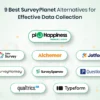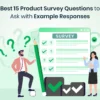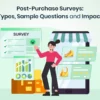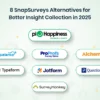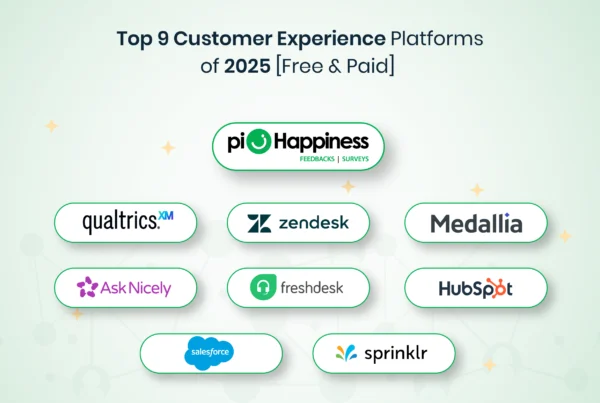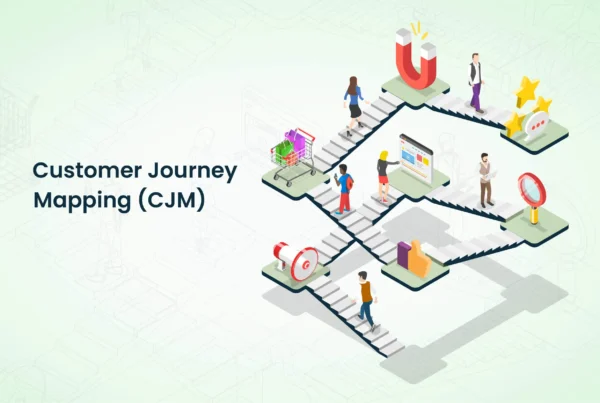In the hustle and bustle of today’s business world, maintaining a loyal customer base is more important than ever. In addition to offering top-notch products and services, sustaining and growing customer loyalty also requires listening to your client’s feedback and taking care of their issues. A useful instrument that companies can employ to measure client satisfaction and loyalty is the Net Promoter Score (NPS) survey.
Through the utilization of NPS survey results, businesses may successfully reduce attrition and foster sustainable growth. By implementing NPS surveys, you may expand your client base to lakhs or even millions—not simply thousands—and this blog will precisely show you how.
What is the NPS, or Net Promoter Score?
A metric called Net Promoter Score (NPS) is used to forecast business growth and gauge customer loyalty. “On a scale of 0 to 10, how likely are you to recommend our product/service to a friend or colleague?” is the basic question that forms the basis of this survey. Three groups of clients are identified based on their responses:
- Promoters (Score 9–10): These clients are pleased and passionate about your company. They’re probably going to spread good word about your company.
- Passives (Score 7-8): While not extremely happy, these clients are content. They may stick with your company, but they may also consider offers from rival companies.
- Detractors (Score 0-6): These dissatisfied clients could damage your company by spreading unfavorable rumors.
How is the NPS Determined?
The NPS is easy to calculate. The equation is:
NPS = % Promoters – % Detractors
A higher number denotes more customer loyalty; the final score can range from -100 to +100. For example, your net promoter score (NPS) would be 60 if 70% of your respondents are promoters and 10% are detractors.
NPS Survey Types
Relationship and Transactional NPS surveys are the two main categories of NPS surveys.
1. Transactional NPS Survey: This kind of survey is initiated by particular interactions or transactions between the client and the company. For instance, you may ask them to rate their experience following a purchase, a support call, or a hotel check-out. This makes it easier to get quick feedback and pinpoint areas that need work at particular touchpoints.
2. Relationship NPS Survey: This survey is conducted regularly (e.g., quarterly or annually) to measure overall customer satisfaction and loyalty over time. In addition to providing insights into long-term sentiment and loyalty trends, it offers a comprehensive picture of the customer’s relationship with your brand.
By combining the two types of surveys, businesses can address individual concerns and analyze broader sentiment patterns while also gaining a thorough view of the customer journey.
Boost loyalty with piHappiness NPS Surveys!❤️
Reduce churn and drive customer satisfaction
Why Should You Take NPS Into Account?
Using NPS surveys has several significant advantages, including:
1. Customer Loyalty: NPS is a reliable indicator of a loyal customer base. You can concentrate on retaining and developing these devoted clients—who are more likely to make repeat purchases and recommend your business to others—by finding promoters.
2. Better Customer Experience: Passives and critics can provide valuable insights into areas that need improvement. Resolving their issues can improve client satisfaction, lower attrition, and improve the entire customer experience.
3. Competitive Advantage: A high NPS might help your business stand out in a crowded market. In the current digital era, customers primarily rely on evaluations and recommendations. Potential buyers may find your brand more desirable with a higher NPS.
4. Reducing Churn: You can lower customer churn by quickly recognizing and resolving your critics’ concerns. By addressing their issues, you can convert critics into advocates, reducing income loss and building a loyal following.
How is an NPS Survey Made?
It’s not too difficult to create a successful NPS survey that only asks two critical questions:
- NPS Survey Question: The primary question asks participants to indicate how likely they are, on a scale of 0 to 10, to suggest their products or services to others. This offers a precise indicator of client loyalty and pleasure.
For instance: “How likely are you to recommend [company/product/service] to a friend or colleague?”
- Follow-Up Question: Respondents can provide an explanation for their ranking in response to this open-ended question. It gives qualitative insights into customer experiences, enabling you to comprehend the factors that influence their loyalty or discontent.
For instance: “What is the primary reason behind your rating?”
Leveraging NPS Survey Software and Tools
Organizations widely use software or solutions for NPS surveys to collect and evaluate NPS data effectively. These platforms, which include features like automated survey triggers, comprehensive analytics, and connectivity with other customer data systems, make the process of designing, delivering, and evaluating surveys easier.
For example, an effective NPS survey tool enables companies to interact with clients, gauge their level of loyalty, and find strategies for reducing attrition. Thanks to these technologies, relationship-based and transactional NPS surveys can be easily implemented at various phases of the customer experience.
Improving NPS Views with Advanced Analytics
Although NPS offers insightful information, it is imperative to combine it with sophisticated analytics to obtain a more comprehensive picture of consumer mood. Here are a few techniques:
- Text analytics: Examine open-ended comments to glean an in-depth understanding of consumer attitudes. This aids in pinpointing particular areas that require improvement and in comprehending the context surrounding the NPS rankings.
- Generative AI: Use generative AI to process and analyze text data more thoroughly. AI can provide more precise insights by segmenting client input according to factors like behavior, sentiment, or demographics.
- Statistical Analysis: Use tools such as the pandas and NumPy libraries for Python to do statistical analysis. This can help firms make data-driven decisions by highlighting trends and patterns in NPS data.
Addressing Limitations of NPS
NPS is an effective tool, but it’s vital to know its limitations:
- Oversimplification: Because NPS only asks one question, consumer sentiment may be oversimplified.
- Lack of clarity: There is no explanation for why customers assigned their scores.
- Single metric: If you only use NPS, you can miss other aspects influencing loyalty.
- Cultural and demographic variations: Culture and demographics have an impact on scores.
- Response bias: Data may be distorted by traumatic experiences.
- Volatility: Considerable score variations can result from small client bases.
- Benchmarking challenges: A number of variables might make industry benchmarking challenging.
- No clearly stated prescription for improvement: NPS lists problems without offering any recommendations for fixing them.
- Silent dissatisfaction: The NPS might miss quiet critics.
- Role of passives: There needs to be more clarity over the importance of passives (neutral) , which leads to ambiguity.
Closing Thoughts
NPS surveys are an essential instrument for gauging customer satisfaction and loyalty. Businesses can obtain important insights into customer experiences, quickly resolve issues, and promote enduring loyalty by putting NPS surveys into practice. The process can be streamlined by utilizing NPS survey software and tools, and the depth of insights obtained can be improved by utilizing advanced analytics.
By converting pleased consumers into passionate advocates, including NPS in your customer feedback approach will assist you in lowering attrition and accelerating business growth. If you haven’t already, incorporate NPS surveys into your business plan to fully utilize customer loyalty data.

